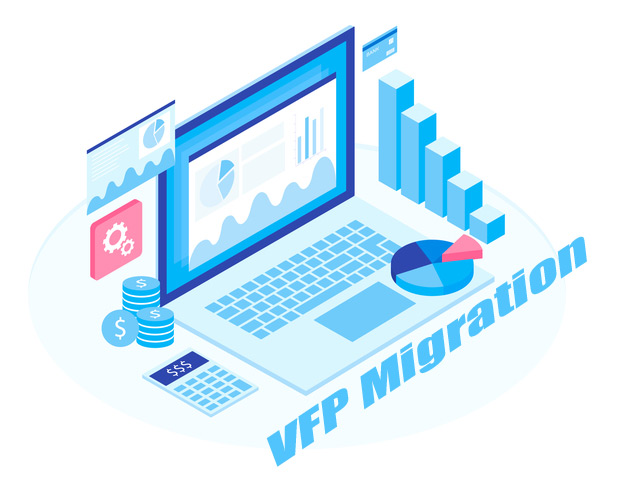
FoxPro and Visual FoxPro was a full featured dynamic application development platform for enterprise businesses since the 90s. With an extensive library of pre-defined classes and visual objects, Visual FoxPro 9.0 had all the tools for developing high performance, 32-bit database applications and components. However VFP 9.0, released in December 2004 ended up being the final version of the product.
With the evolution of technology, businesses must keep abreast of modern technology to ensure future growth potential. Unfortunately, VFP no longer serves that purpose as modern applications demand portability, interoperability, device readiness, security, Big Data, regulatory compliance, and scalability.
Additionally, in recent years there has been a steep decline in VFP developers. Professionals no longer want to focus on obsolete technology and turn their attention to up-and-coming futuristic platforms. Therefore, businesses have a hard time maintaining their existing VFP applications.
Visual FoxPro Migration allows businesses to digitally transform critical applications to modern technology and has been a proven strategy for business growth.
The phasing out of Visual FoxPro will provide businesses to address the huge pain points of the present system, whether for sales, customers, administrators, or support staff. There are things every company should focus on when it comes to Visual FoxPro end of life are:
Define the End Goals
After documenting raw numbers to show the size of the project, you should consider the project’s technical difficulty. Case in point, a project using VFP data settings with remote views to a SQL Server database in all of its measures will be easier to translate to .NET than one that opens local tables indiscriminately throughout the code.
Define the Time Line
As with metrics, a clear agenda helps give your mission insight and lucidity. Schedules will vary with project objectives, limitations, and philosophies. At the moment, the schedule is not a timeline with deadlines and mileposts. Rather, it purposes as a plan that you can connect and monitor, providing the administration with status and insight into the development.
Visual FoxPro has now become an outdated technology and this urges the need for many companies running their mission-critical applications to migrate to the stable .NET environment. If you are a consultant familiar with VFP to .NET migration projects, you need to specify the deadlines for the applications running in VFP.
A prominent financial institution faced limitations with their 30-year-old invoicing application bui ...
Macrosoft conducted a Visual FoxPro best practices survey during March 2021. Download the Survey Rep ...
Though every migration is unique and we like to say we do one migration at a time, we have found the ...
The time really has come to virtualize your VFP application. We are not talking about migration or conversion or bringing ...
The rapidly evolving digital market demands that businesses keep their technology stacks current to stay competitive, efficient, and scalable. One ...
Technology evolves rapidly, and organizations still relying on legacy systems built with Classic ASP and VB6 are facing increased challenges. ...